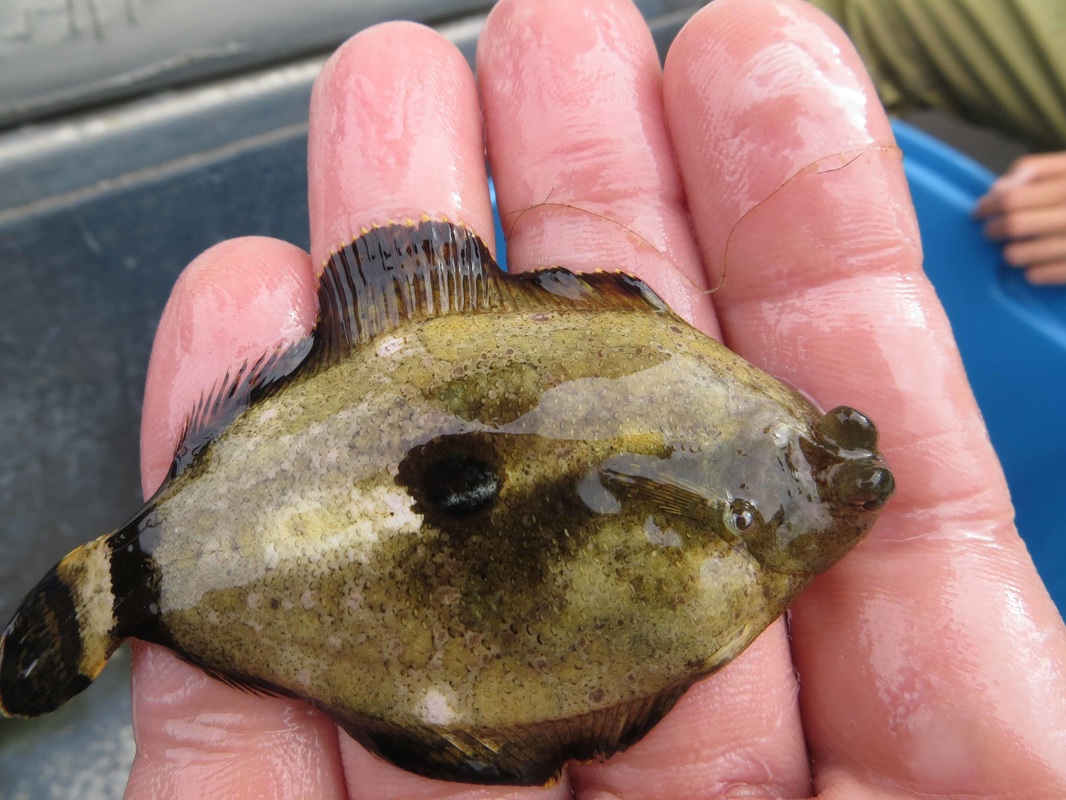C-O sole, popeye sole, spot flounder • Pleuronichthys coenosus
{Pleura = side, ichthys = fish}
Identification
This right-eyed flounder is named for the crescent-shape ("C") and spot ("O") on its tail — note that these markings may be indistinct and a little imagination may be needed to distinguish them as letters. The C-O sole also has a dark spot in the middle of it's upward-facing (eyed) side. It gets to 36 cm long and is usually brown in colour, though individuals that live around pink coralline algae may have pink patches to match their surroundings.
Habitat & Range
The C-O sole is found in both rocky and flat sandy areas of the subtidal to depths of 350 m. Its range extends from southeastern Alaska to northern Baja, California.
Intriguing Info
This fish is not generally targeted by commercial fleets in the Pacific Northwest, though it is fished in California.
iNaturalist
https://www.inaturalist.org/taxa/228393-Pleuronichthys-coenosus
This right-eyed flounder is named for the crescent-shape ("C") and spot ("O") on its tail — note that these markings may be indistinct and a little imagination may be needed to distinguish them as letters. The C-O sole also has a dark spot in the middle of it's upward-facing (eyed) side. It gets to 36 cm long and is usually brown in colour, though individuals that live around pink coralline algae may have pink patches to match their surroundings.
Habitat & Range
The C-O sole is found in both rocky and flat sandy areas of the subtidal to depths of 350 m. Its range extends from southeastern Alaska to northern Baja, California.
Intriguing Info
This fish is not generally targeted by commercial fleets in the Pacific Northwest, though it is fished in California.
iNaturalist
https://www.inaturalist.org/taxa/228393-Pleuronichthys-coenosus
References
Froese, R., and Garilao, C.V. Pleuronichthys coenosus Girard, 1854 C-O sole FishBase. Accessed 28/03/2018.
Lamb, A. and Edgell, P. Coastal Fishes of the Pacific Northwest. Revised. (2010). Madeira Park, BC: Harbour Publishing. P. 306-307.
Lamb, A., and Hanby, B. (2005). Marine Life of the Pacific Northwest [electronic version]. Madeira Park, BC: Harbour Publishing.
Authors and editors of pages
Kelly Fretwell (2018).
Froese, R., and Garilao, C.V. Pleuronichthys coenosus Girard, 1854 C-O sole FishBase. Accessed 28/03/2018.
Lamb, A. and Edgell, P. Coastal Fishes of the Pacific Northwest. Revised. (2010). Madeira Park, BC: Harbour Publishing. P. 306-307.
Lamb, A., and Hanby, B. (2005). Marine Life of the Pacific Northwest [electronic version]. Madeira Park, BC: Harbour Publishing.
Authors and editors of pages
Kelly Fretwell (2018).






